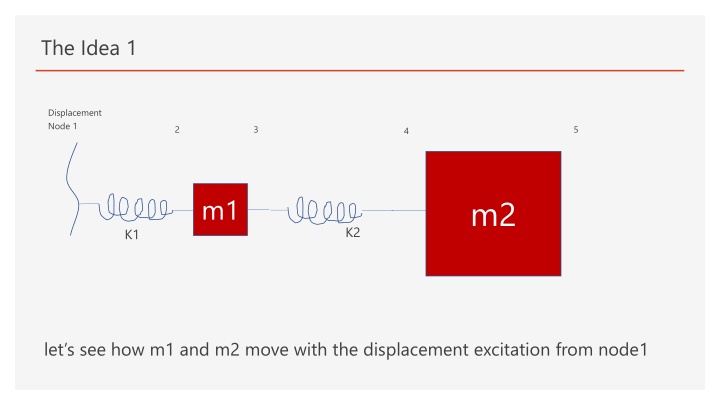
Correcting Movement Deviation in Mechanical System Analysis
Explore the comparison between results from a pure Lumped Mechanical System and Multibody Dynamics analysis, identifying reasons for deviation in movement of components m1 and m2. Discover why the LMS and MBD methods may not align in certain scenarios, offering insights into enhancing model accuracy.
Download Presentation

Please find below an Image/Link to download the presentation.
The content on the website is provided AS IS for your information and personal use only. It may not be sold, licensed, or shared on other websites without obtaining consent from the author. If you encounter any issues during the download, it is possible that the publisher has removed the file from their server.
You are allowed to download the files provided on this website for personal or commercial use, subject to the condition that they are used lawfully. All files are the property of their respective owners.
The content on the website is provided AS IS for your information and personal use only. It may not be sold, licensed, or shared on other websites without obtaining consent from the author.
E N D
Presentation Transcript
The Idea 1 Displacement Node 1 2 3 5 4 m2 m1 K2 K1 let s see how m1 and m2 move with the displacement excitation from node1
Perfectly Match! The result from the Lumped Mechanical System and Multibody Dynamics The result from the pure Lumped Mechanical System
The Idea 2 Displacement Node 1 2 3 5 4 K2 m1 m2 K1 C2 let s see how m1 and m2 move with the displacement excitation from node1
Big deviation for the movement of m2 The result from the Lumped Mechanical System and Multibody Dynamics , which is not correct in theory. The result from the pure Lumped Mechanical System , which is correct in theory.
Why it doesnt work with the LMS and MBD method at the model?






















